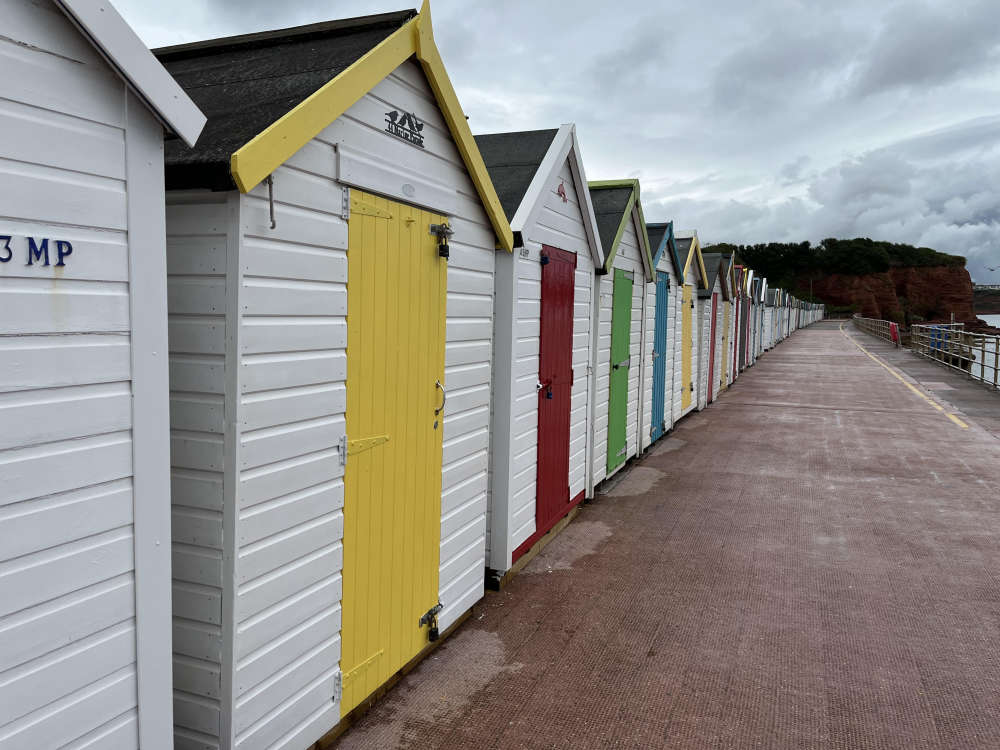
They're not happy
Beach hut owners at a Blue Flag beach in Torbay have been warned they face a ‘season of disruption’ as their huts are put in storage during a massive seafront revamp.
But Torbay Council says it knows how important the huts are to them, and the impact will be kept to a minimum.
It was standing room only as hundreds of people crammed the ballroom of the Redcliffe Hotel for a public meeting on the Preston scheme.
Putting a new protective wall and flood gates along Paignton and Preston seafronts will be funded by £13.5million of government money, and work will begin next month.
The aim is to guard low-lying parts of the town from flooding during storms, and protect the area as sea levels rise due to climate change.
The beach huts at Preston will be stored from next month until spring 2027, when they will be put out on the re-built seafront again. There will be no huts at all beside the beach next summer.
Angry hut owners – known as ‘hutters’ – said they had been promised ‘minimal disruption’ and claimed the council had treated them with contempt.
Cllr Adam Billings (Con, Churston with Galmpton) organised and chaired the Redcliffe meeting, and said: “I don’t want to have to come to another meeting like this having failed miserably. I want to be able to say that what we have done is as good as it possibly can be.”
Hutters wanted to know where their huts would be stored, how the council had ‘graded’ them and why there had been so little communication from the Town Hall.
“There are lots of unanswered questions,” said Jennie Davies, who chairs the Beach Hut Owners Group. “We need to stop all the rumours and scaremongering.”
Cllr Billings apologised and told them: “The communication could have been better.”
David Carter, the council’s director of regeneration, said no work would take place during the prime six-week 2026 summer holiday season, and there would be access to the entire beach throughout the project.
“There will never be a time when the beach itself is shut,” he pledged.
He said any requests made by the hutters would be passed on to contractors, but warned that too many changes could make the project cost more and take longer.
Matt Reeks, the managing director of SWISCo, which manages the bay’s beaches, conceded that communication with the hutters had been ‘appalling’.
He said that of the 298 huts on Preston seafront, 90 were in ‘excellent’ condition to withstand 18 months in storage, nine had been condemned and 78 were OK, but 121 would need major repairs before they could be stored.
One angry hutter said the more huts the council could disqualify, the less storage space it would have to find, while others claimed it was a ‘back door’ way to introduce more expensive huts made of more durable composite materials.
Buying a composite hut outright could cost up to £5,000, but Mr Reeks stressed that this was only being explored as an option for replacement huts in the future, and more affordable lease terms could be possible.
“A lot of other authorities are doing this,” he said. “It makes sense to look at them.
“Our coastline is the jewel in the crown, and the beach huts play a really prominent role in that.
“There are huts out there that are below par, and they let the side down. There is nothing wrong in us trying to maintain an aesthetic standard.”
Mr Reeks also said he would take on board questions about creating a ‘plaza’ with temporary lockers, extra toilets and communal areas for beach users while the work is under way.
Some people also raised concerns that their huts would not be put back in the same place, and they would not have the same friends and neighbours around them.
Cllr Billings said: “We are working very hard to give people their view of the sea, their view of the green, or their great neighbours. That’s what is important to them, and the council is trying to do that.”
After the meeting Cllr Billings said he hoped people had gone away having had their questions answered.
“I understand how important these beach huts are to everyone,” he said.
“We’re really trying to do the best for our residents and to give them back their beach huts in an improved public realm area, while also incorporating very important flood defence works which will stop homes flooding in the future.
“So yes, there’s that 12 to 18 months of disruption, but we don’t really have an option not to do this, and we’re working very hard to try to minimise the impact on everyone.”
 Public asked for views about Devon libraries
Public asked for views about Devon libraries
 Christmas cancelled in Crownhill
Christmas cancelled in Crownhill
 Hourly services return on Exeter to Waterloo line
Hourly services return on Exeter to Waterloo line
 £1 million Exeter Quay bridge axed
£1 million Exeter Quay bridge axed
 Flags to be removed from Plymouth streets for safety reasons
Flags to be removed from Plymouth streets for safety reasons
